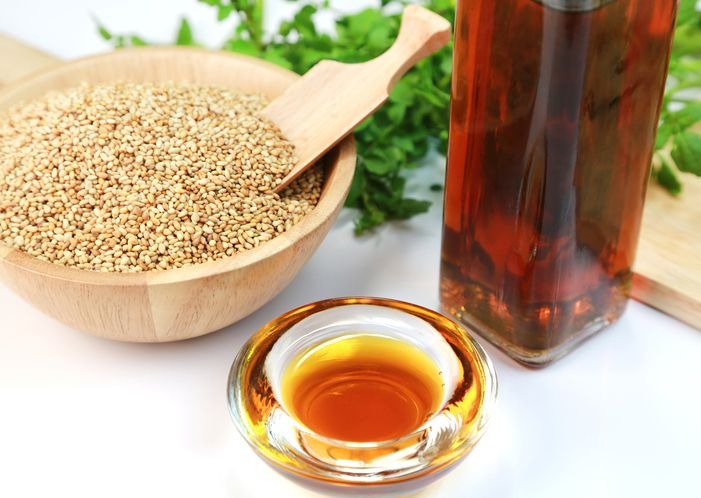Fried rice is a universally loved dish, enjoyed for its simplicity, flavor, and versatility. One key ingredient that elevates this dish is sesame oil. Understanding when to add sesame oil to fried rice is pivotal, as it can influence the final taste and texture of your dish. This article aims to unravel the mysteries behind this crucial component.

Understanding Sesame Oil
Before delving into the specifics of adding sesame oil to fried rice, it's important to understand what makes it special. Rich in antioxidants and healthy fat, sesame oil offers a nutty, complex flavor that complements the savory and slightly sweet notes of fried rice. Learn more about essential cooking oils.

The First Addition: During Initial Stir-Fry
One popular method for adding sesame oil to fried rice involves incorporating it early in the cooking process. Stir-frying your main ingredientssuch as vegetables, proteins, and aromatics like garlic and gingerwith a dash of sesame oil can infuse the entire dish with its signature flavor. Here, the high heat helps release the oil's fragrant essence, mingling it beautifully with the other ingredients.
Advantages
Adding sesame oil at the beginning allows it to coat your ingredients evenly, helping them cook more quickly and uniformly. This method enriches the overall flavor of the dish and provides a subtle, well-rounded sesame flavor profile. Check out our stir-frying tips.
Disadvantages
The high heat used for stir-frying can degrade the quality of sesame oil over time, resulting in a less prominent flavor, especially if the cooking is prolonged.

The Second Addition: Midway Through Cooking
Another effective approach is to add sesame oil midway through cooking. At this stage, typically you've added the cooked rice to the pan and want to mix in various seasonings. Adding sesame oil at this point strikes a balance between infusing the dish with its flavor and preserving the oil's integrity.
Advantages
This method allows sesame oil to be better absorbed by the rice and other ingredients, helping them retain some moisture and preventing the rice from becoming too dry or sticky.
Disadvantages
One downside could be the need for careful stirring. Insufficient mixing at this stage may result in unevenly distributed oil, leading to occasional overly strong bites. Learn more about cleaning kitchen after cooking.

The Final Touch: At the End of Cooking
The third method is to add sesame oil right at the end of the frying process, just before serving. This technique is often preferred by those who love a strong, unaltered sesame flavor in their fried rice.
Advantages
Adding sesame oil at the end ensures it retains its rich, aromatic qualities. This method works well for enthusiasts of pure sesame oil flavor, as it will be more pronounced.
Disadvantages
However, adding it at the end might result in a slightly oily texture if not mixed well. It's crucial to combine it thoroughly with the other ingredients to avoid this issue.
Expert Opinions
Renowned chefs and cooking experts have their own preferences when it comes to adding sesame oil to fried rice. Chef John from Food Wishes suggests adding a drizzle of sesame oil at the end to keep the flavor robust and fresh. On the other hand, Chef Preeti Mistry likes to incorporate it at the beginning for a more integrated taste.
Expert Tip: Layering Flavor
Some culinary experts recommend adding sesame oil at multiple stages to layer the flavor. Start with a small amount during the initial stir-fry, add a little more midway, and finish with a drizzle at the end. This method ensures a rich, multi-dimensional taste experience.
Practical Tips for Home Cooks
For home cooks, here are practical tips on using sesame oil in fried rice:
- Always use high-quality sesame oil to achieve the best taste.
- Experiment with different vegetables and proteins to find your favorite combination.
- Use a well-seasoned wok or skillet to prevent sticking and ensure even cooking.
- Balance your seasonings with soy sauce, oyster sauce, and a splash of rice vinegar.
- Never overdo the sesame oil; its strong flavor can easily overpower the dish.
Frequently Asked Questions
1. Can I use toasted sesame oil?
Yes, toasted sesame oil is often preferred because of its richer, more intense flavor. However, it's more sensitive to heat and should ideally be added at the end of cooking.
2. How much sesame oil should I use?
Generally, one to two teaspoons are sufficient for an average batch of fried rice. Adjust according to taste.
3. Is sesame oil essential in fried rice?
While not mandatory, sesame oil adds a unique flavor that can elevate your fried rice. It's worth experimenting to see if you enjoy the addition.
As an Amazon Associate, I earn from qualifying purchases.
As an Amazon Associate, I earn from qualifying purchases.






Leave a comment
This site is protected by hCaptcha and the hCaptcha Privacy Policy and Terms of Service apply.